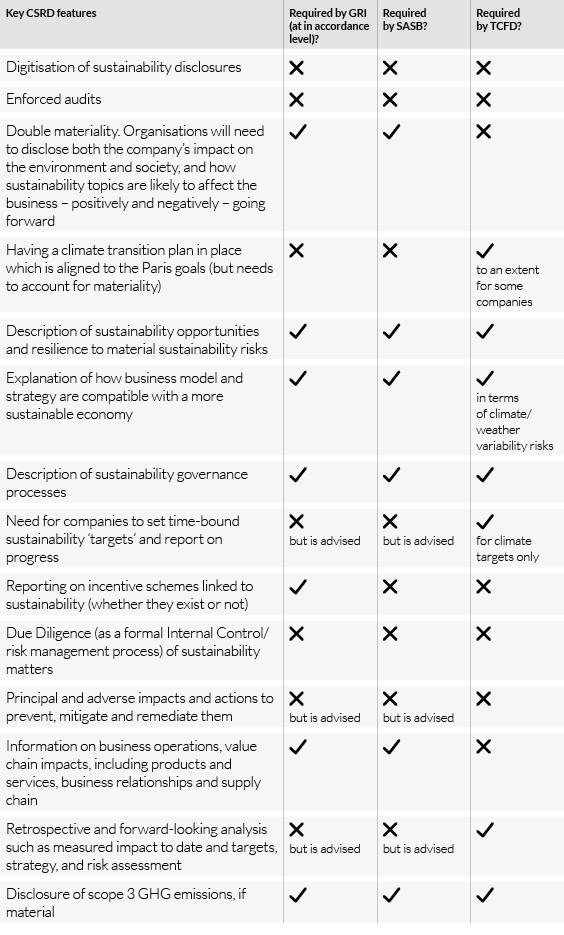What is the CSRD?
The EU’s CSRD is new reporting legislation which has been developed to address shortcomings of the Non-Financial Reporting Directive. It will introduce more detailed reporting requirements around the environment, society, human rights and governance.

How does it affect companies based in the UK?
The CSRD will require some UK-listed companies with EU subsidiaries to comply with its sustainability disclosures. The disclosures need to be included in a management report (which is usually the Annual Report). This means preparers will need to ensure sustainability disclosures are ready and published at the same time as the Annual Report.
The typical multi-national firm listed in the UK won’t be in scope for 2024 (which is when the phased implementation starts). Rather, it looks like most (but not all) in-scope UK-based firms will need to comply from 2028. Some companies may need to report earlier, for example, if the company has a secondary EU listing and more than 500 employees, or has a large undertaking incorporated in the EU.
Key deadlines for compliance are staggered as follows:
From 1 January 2024 (first reports published in 2025) for EU listed large undertakings or EU listed parent undertakings of large groups with more than 500 employees during the financial year;
From 1 January 2025 (first reports in 2026) for EU-incorporated large undertakings (whether listed or not) or parent undertakings of large groups, which did not fall within the 1 January 2024 deadline;
From 1 January 2028 (first reports in 2029) for non-EU companies with branches or subsidiaries based in the EU.
If you’re a premium-listed UK business within scope, be reassured it’s likely you are already compliant with most of the requirements given the gradual and extensive increase in sustainability disclosure over the past decade, most notably with the introduction of mandatory TCFD reporting.
What do I have to report on and how is it different to current practice?
Companies within scope will have to report against the parts of the Directive which are material to them (the Directive is made up of 12 Standards although some of the Standards are mandatory regardless of materiality). There are a vast 82 disclosures in total, with future sector-specific Standards also planned.
The CSRD has been designed to align with GRI, SASB and TCFD so if you are already reporting against these, compliance will be easier. Key requirements of the Directive not covered by existing UK legislation include a ‘double materiality’ approach and ensuring sustainability data is externally assured. All sustainability disclosures will also need to be prepared in the European Single Electronic Format (ESEF), the XHTML format already required for Annual Reports, and disclosures will need to be digitally tagged using XBRL.
A note on ‘double materiality’: this term has been recently adopted to highlight the fact that materiality assessments need to be ‘outward looking’, assessing for impacts on the environment and society (including the perspectives and concerns of relevant stakeholders), as well as assessing how sustainability (or CSR, or ESG) topics affect the business itself. GRI first articulated this principle in earlier editions of its Guidelines. The materiality principle was elevated still further in the GRI Standards 2021. The word ‘double’ can be taken as ‘doubling down’, reminding assessors to find ways to evaluate impacts on the outside world, however challenging that may be.

How can I start to prepare?
First, establish whether you are in scope and when you need to report by. Then benchmark your current reporting against the draft Standards to identify gaps. You’ll then need to consider what is material through a double materiality assessment and begin data gathering where needed.
A Friendly guide
Friend can help guide you through the process and evolve your reporting approach. Email us for a chat.